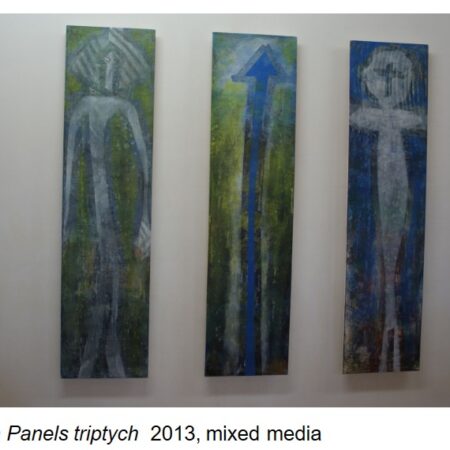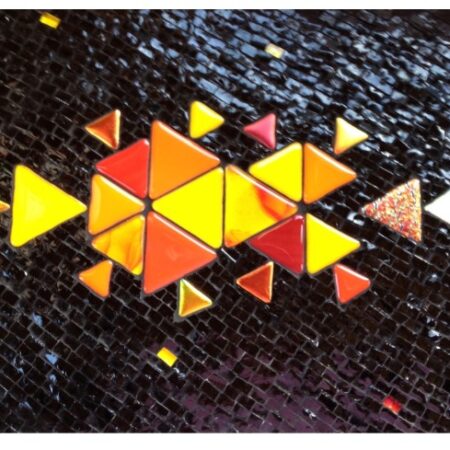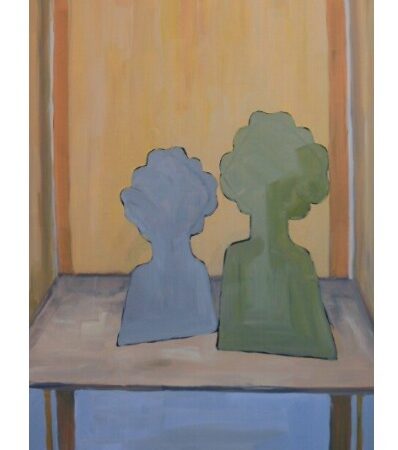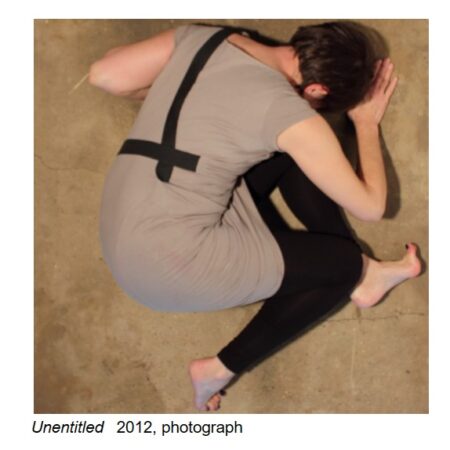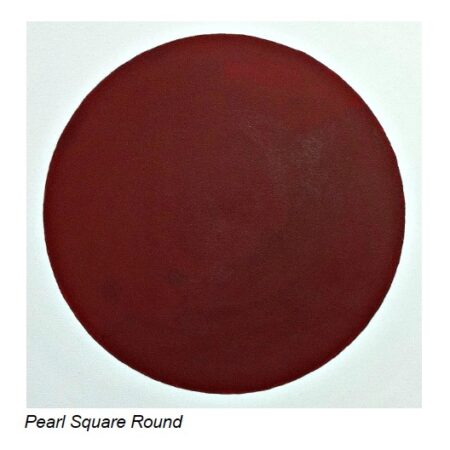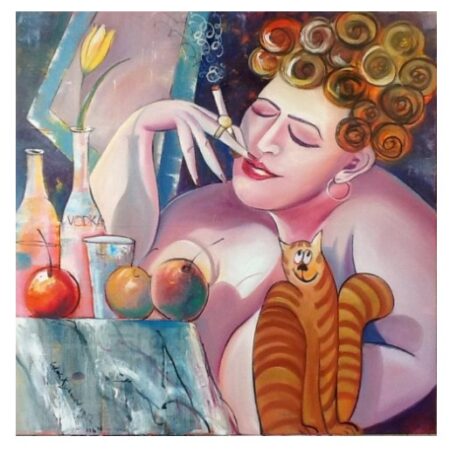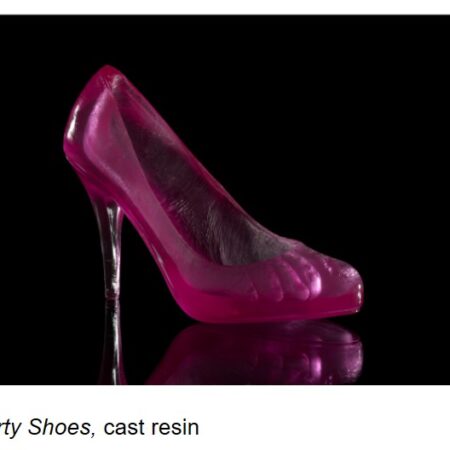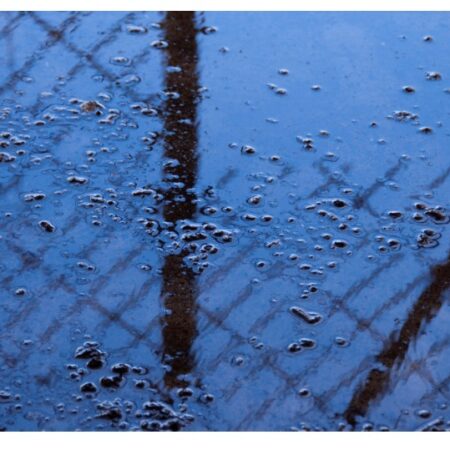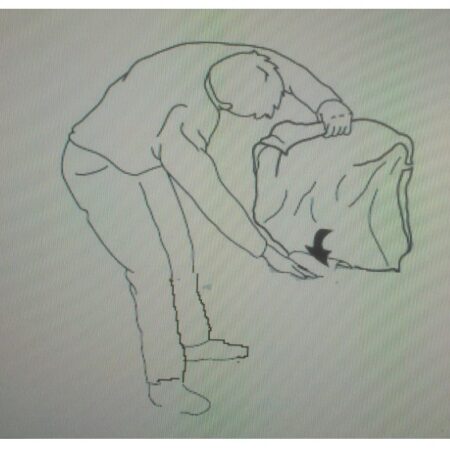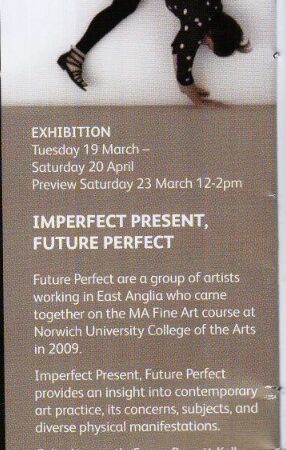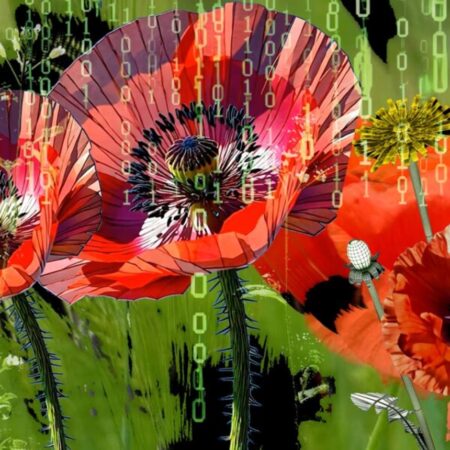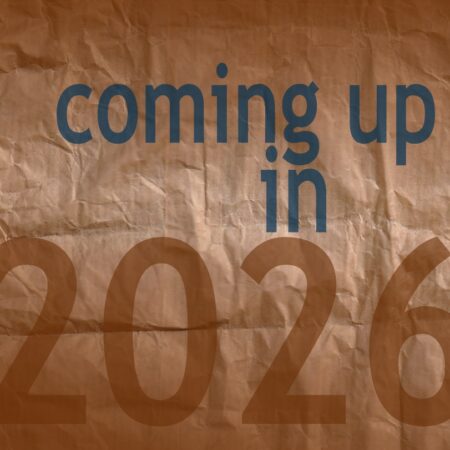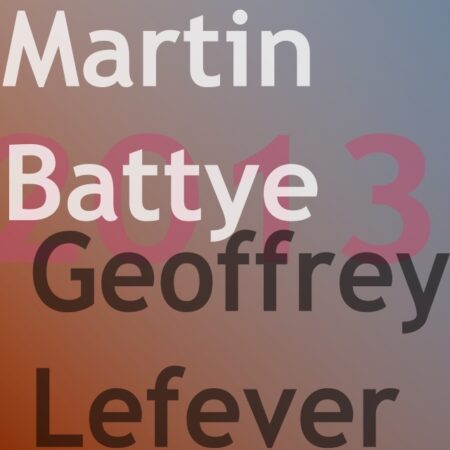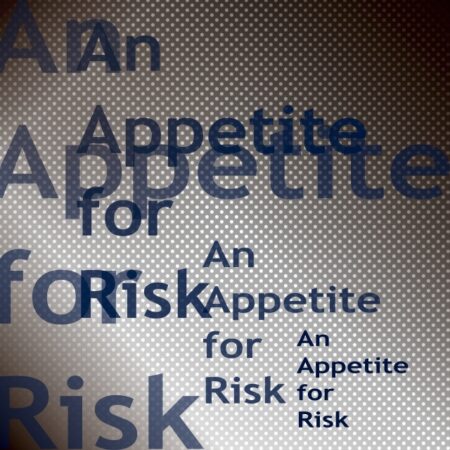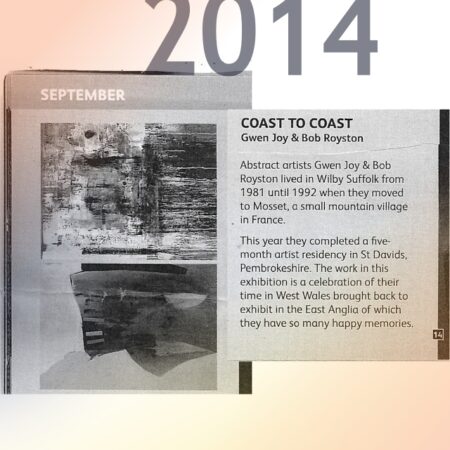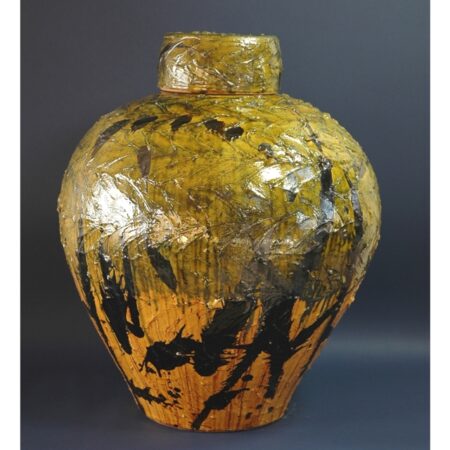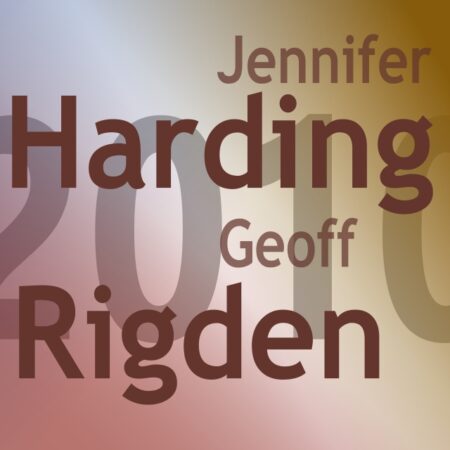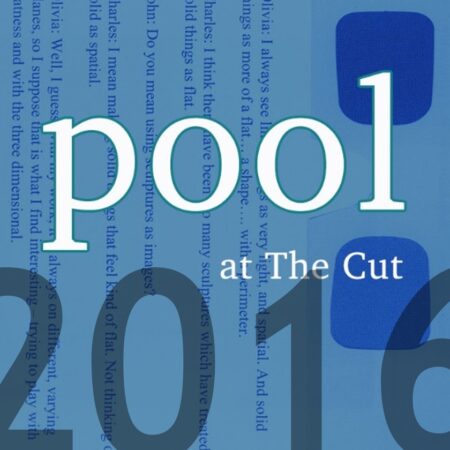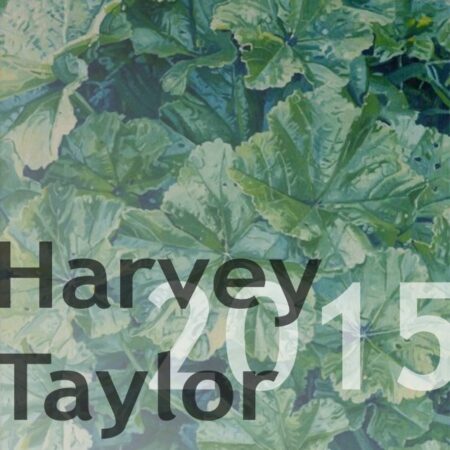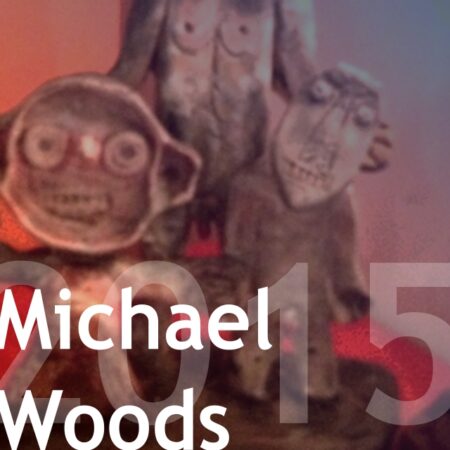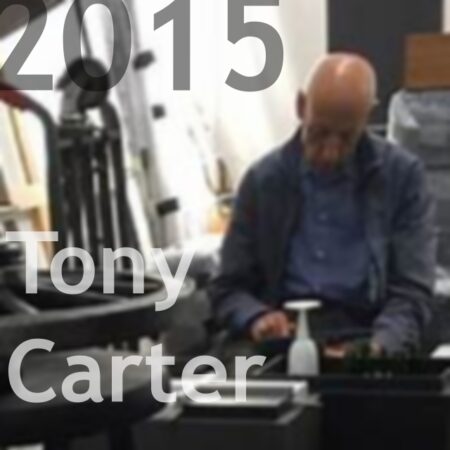
IMPERFECT PRESENT FUTURE PERFECT
Date: March 2013
Exhibition/Show Type:
Group
Media: Ceramics, Drawing, Mixed Media, Painting, Photography, Sculpture, Other
Exhibition Description
March/April 2013 Group Show at The Cut.
FUTURE PERFECT are a group of artists working in East Anglia who came together on the MA Fine Art course at Norwich University College of the Arts in 2009.
IMPEFECT PRESENT, FUTURE PERFECT provides an insight into contemporary art practice, its concerns, subjects, and diverse physical manifestations.
Contributing Artists: Colin Ainsworth, Susan Barrett-Kelly, Bev Broadhead, Barbara Dougan, Mary Halpin, Gena Ivanov, Sue Law, Caroline Munn, Mike Newman, Ruth Philo
Please note: not all artists website links are currently active (July, 2025).
COLIN AINSWORTH
Recent art is humorously self-mocking, concerned with being an artist, ageing, sensory loss, and palimpsest. The notion of palimpsest explores rewriting, remaking and reinterpretation over time – re-fabrication in other words, not always truthfully or seriously.
The triptych in this exhibition focuses on living near the sea, a theme I return to from time to time. Each of the Sea Panels was built up and worn away using water and sand as tools, combined with chalk, burnt wood and pigment. The beginning was sea-related words, overlaid by sprayed, rolled and dragged materials. These were then partially peeled or scraped off in a metaphor of the action of tides meeting the land.

The ‘figure’ images relate in part to a text I wrote in Penarth in 1972, called ‘A room near the sea’, reflecting on the sight of a washed up calf’s corpse and memories of seeing my father moments after his sudden death.
I am also engaged in taking a quizzical second look at my early performance art work, through book-based art, mixed media works and blogs. It interests me because it is now a major art trend, and I have a poor memory for my motives and details of actions from my early career. As a culmination of some ambitious group performance works for Cardiff College of Art, in 1975 I was commissioned to make nine audience interaction events for John Gingell at the Tate Gallery (Tate Games). John and I were members of Cardiff based Zoo Group, and our Zoo magazines of original performance art texts are now in the David Mayor collection in the Tate archives, and the Tate Games work is in the Tate education department’s archives.
I have exhibited my work widely in private and public galleries, museums and art centres in the UK. It is also represented in public and private collections in England and Wales. I am a member of Outpost in Norwich, and Axis.
Personal website: www.impossiblethings.net/colin
SUSAN BARRETT-KELLY
My current work has evolved from the study of repeating fractal patterns in nature.
For many years I have been interested in mosaics, the history, the culture and the symbolism. Mosaic is one of the oldest art forms known to man. To combine kiln fused glass with this medium results in a strong dynamic result.

BEV BROADHEAD
I use and re-use motifs derived from familiar places or situations, mainly painted, but sometimes explored through different media. These are then presented in a variety of ways. Often reflected or refracted within a loose framing; within the confines of an installation, a collection of painted images or leading to a collaborative activity. Where these works meet or overlap, and how we connect them is where my interest lies.
The presentation of these multiples in a variety of guises prevents one side of the story. The desire to work in this way stems from an attempt to show that there is no one truth and no one error.

BARBARA DOUGAN
Current work evolves through physical experiment whereby the action, traced movement and mark making become inseparable; I am the subject and maker of the image, and the medium of the work. It is fundamental to the work that the artist is present – there is an acculturation through duration and a struggle with the difficulty of being active and present in the work. The creation of sensations of bodily empathy suggests the expression of desires incited precisely by what cannot be obtained, by what is beyond reach.
My direct physical engagement in the work is as much a process of personal investigation – into how we constrict and limit ourselves – as how the social, familial, domestic and political environments limit our ability to express who we are and how we feel. A perpetual cycle of futile actions defined by constraint or confinement fail to alter or break out of inhibiting
circumstances. These works are about the problem of self-expression and the individual, or individual need, versus the needs of society and the community.

I was the Director of Bury St Edmunds Art Gallery for eleven years and currently work as an artist, freelance curator and consultant.
MARY HALPIN
This series of works continues my research into the re-structuring of Minimal Art. It embodies the elements of geometric shapes, linear perspectives, repetitions, space and limited use of colour found in the minimalism of the 1960s and 1970s. My Minimal Art of today is, however, very different and asks the viewers to consider the issues outside the work which can only be explained by the backstory.
In this work I am reflecting on the political issues and debate, not initially evident to the viewers, created by the imprisonment of the Shia clinicians in Bahrain who treated the casualties from the uprising against the ruling Sunni Royal Family and Government in 2011 – 2012.
A target in this uprising was the Bahrain Formula 1 Grand Prix fixture, arranged by the Royal Family and the FIA Governing Body. Mary has used the symbol of the circle in this work together with the dark red to reflect, not only on the fixture, but also on the incidents associated with this event. The ramifications for the clinicians were lengthy custodial sentences.

GENA IVANOV
My artist’s career started after graduating in the early 90s in Belarus. My paintings are about colour; life can be quite grey and I want my paintings to make people feel good. I like to work in different styles, particularly in the impressionist style and I prefer to work big. To work in different styles gives me the opportunity to find unusual and creative approaches to making a picture. I have always been quite experimental, trying different materials, paints and painting techniques, but the medium I prefer is oil paintings. I refer to it as fusion style.
My work has changed a lot since I left the USSR and settled in Norwich. The style I was taught in the USSR was very traditional and experimenting was not encouraged. I became accustomed to painting work for sale in my gallery, but ultimately I found this constraining. Studying for an M.A. in Fine Art at Norwich University of the Arts freed my work so that I have been able to develop some of my thinking and create a new pathway.

SUE LAW
The body and its relationship to the space that surrounds it inspire my sculpture. Absence and Presence are recurrent themes within my work as these sculptures are the physical depiction of the negative space around the figure. Using resin I have made sculptures of stiletto shoes that include an impression of the wearer’s feet.

My latest shoe sculptures are baby shoes that include the tiny impression of my Grandson’s feet. These perfect little sculptures can be commissioned to include the imprint of your baby’s feet.
I enjoy the process of making sculpture and have used the solid substantial physicality of bronze and the light delicacy of plaster bandage to describe the negative space around the exquisite curves of the figure.
RUTH PHILO

I am interested in exploring abstract qualities in painting, particularly concerned with surface, mark and colour, and their power to evoke feeling and memory. The paintings become a record, with their own condensed histories.
Trained originally as an Art Historian and initial work as an archaeologist have led to an inescapable fascination with looking. Work often begins from noticing mundane or overlooked elements in the everyday, connected with place, time and our relationship with our immediate surroundings. I work in oils or acrylics, sometimes in series on an intimate scale.
The paintings shown here, although abstract, come from a visit to the Orfordness Lighthouse in summer 2012. Inside the lighthouse at certain times of day and in certain lights it becomes filled with refracted colour and the curved walls take on an otherworldly quality.
CAROLINE MUNN
‘The uncanny is something which is secretly familiar, which has undergone repression and then returned from it.’
Sigmund Freud, 1919, from his essay “The ‘Uncanny’”
My recent series ‘Uncanny Isle’ was shot over the late spring and summer of 2012 on Orford Ness, a large shingle spit off the Suffolk Coast. For most of the 20th century the Ministry of Defence owned this desolate place and much of what took place there was shrouded in secrecy.
As Robert Macfarlane describes it in his book The Wild Places. ‘All across the Ness, enigmatic military structures still protrude from the shingle – pre-fabricated barracks, listening stations, beacons, watchtowers, bunkers, explosion-chambers. Unexploded ordinance still lies around.’(Macfarlane, 2007:256)

Now owned by the National Trust these buildings are gradually crumbling away on this exposed desert like strip of land. They are becoming modern day ruins, monuments to the Cold War as nature gradually reclaims the Ness. But the reverberations of the experiments and tests that took place on Orford Ness can still be felt today – the very concrete and bricks of the place are infused with ‘the uncanny’.
MIKE NEWMAN
The extensive downloadable collection of the Ikea instruction manual provides a source of material for me to manipulate and edit. I prepare images using different approaches to create a pause for thought. These three images combine together to create a dialogue through drawing.

Collaborating Artists
Barbara DouganCaroline Munn
Colin Ainsworth
Gena Ivanov
Mary Halpin
Mike Newman
Ruth Philo
Sue Law







